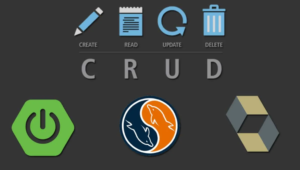Scrapy is a powerful and flexible Python framework for web scraping. It provides a convenient and efficient way to extract data from websites. When working with Scrapy, you can apply advanced techniques and best practices to enhance your web scraping workflow. Here are some advanced techniques and best practices for web scraping with Scrapy:
- Use Item Loaders: Scrapy Item Loaders allow you to define reusable rules for extracting data from web pages. They provide a convenient way to specify data extraction logic and handle complex data transformations.
- Handle Pagination and Infinite Scrolling: Many websites implement pagination or infinite scrolling to display large amounts of data. To scrape such websites, you need to handle the logic for navigating through different pages or dynamically loading content. Use Scrapy’s Request objects to make subsequent requests and extract data from multiple pages.
- Deal with Dynamic Content: Some websites rely on JavaScript to render content dynamically. Scrapy alone may not be able to handle JavaScript-based content. In such cases, you can use additional tools like Selenium or Splash, which allow you to interact with web pages that require JavaScript execution.
- Handle Login and Authentication: If you need to scrape data from websites that require user authentication, you can simulate login actions using Scrapy’s FormRequest. Provide the necessary login credentials and handle session cookies to maintain authentication throughout the scraping process.
- Respect Website Policies: When scraping websites, it’s important to respect the website’s terms of service and follow ethical scraping practices. Ensure that you are allowed to scrape the website’s content by checking for a robots.txt file and adhering to any rate limits or crawling restrictions specified by the website.
- Use Scrapy Extensions: Scrapy provides various extensions that can enhance your scraping process. For example, the RetryMiddleware extension can handle failed requests and retries automatically. The AutoThrottle extension helps you manage the rate of your requests, preventing overwhelming the website.
- Handle Errors and Exceptions: Implement proper error handling in your Scrapy spiders. Handle HTTP errors, connection timeouts, and other exceptions that may occur during the scraping process. Use Scrapy’s error handling mechanisms such as the
handle_httpstatus_listattribute and theerrbackparameter of the Request object. - Store Data Effectively: Decide on the storage mechanism for the scraped data based on your requirements. You can store the data in a structured format like CSV or JSON, or directly store it in a database. Scrapy provides pipelines to process and store the scraped items efficiently.
- Test and Debug: Test your Scrapy spiders thoroughly to ensure they are working as expected. Use Scrapy’s built-in shell and debugging tools to inspect and interact with the scraped data and diagnose any issues.
- Monitor and Maintain: Monitor your scraping process to detect any errors or changes on the target website. Regularly check for updates or changes in the website’s structure or data format to ensure your spiders continue to work properly.
By applying these advanced techniques and best practices, you can build robust and efficient web scraping solutions using Scrapy. Remember to always be mindful of legal and ethical considerations when scraping websites and to respect the website’s policies.



